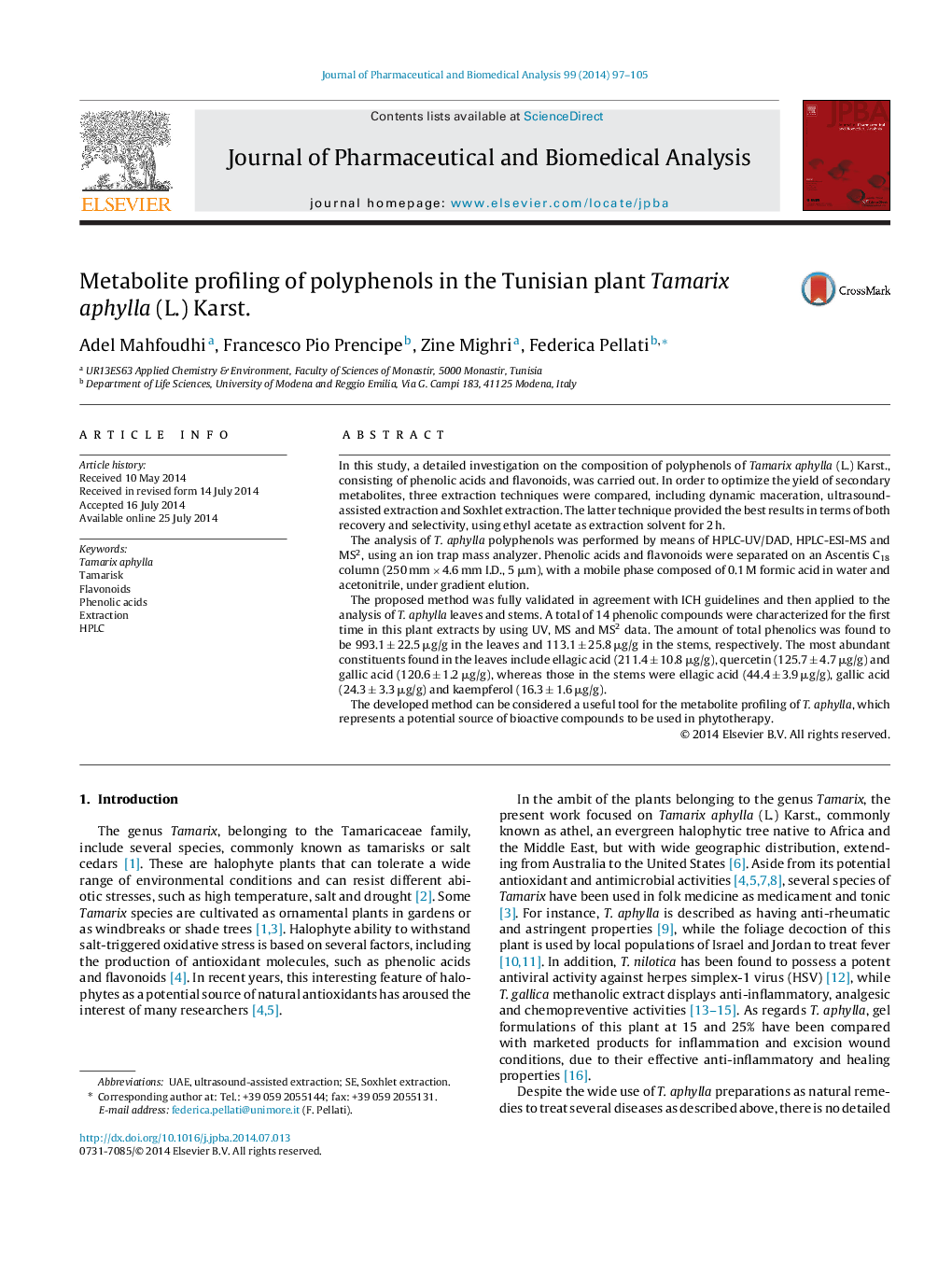| کد مقاله | کد نشریه | سال انتشار | مقاله انگلیسی | نسخه تمام متن |
|---|---|---|---|---|
| 1220984 | 1494636 | 2014 | 9 صفحه PDF | دانلود رایگان |

• The composition of Tamarix aphylla polyphenols was studied in detail.
• The best extraction conditions were determined by comparing different techniques.
• HPLC-UV/DAD, MS and MS2 allowed a reliable identification of secondary metabolites.
• The developed method was fully validated in agreement with international guidelines.
• The amount of total phenolics was found to be higher in the leaves than in the stems.
In this study, a detailed investigation on the composition of polyphenols of Tamarix aphylla (L.) Karst., consisting of phenolic acids and flavonoids, was carried out. In order to optimize the yield of secondary metabolites, three extraction techniques were compared, including dynamic maceration, ultrasound-assisted extraction and Soxhlet extraction. The latter technique provided the best results in terms of both recovery and selectivity, using ethyl acetate as extraction solvent for 2 h.The analysis of T. aphylla polyphenols was performed by means of HPLC-UV/DAD, HPLC-ESI-MS and MS2, using an ion trap mass analyzer. Phenolic acids and flavonoids were separated on an Ascentis C18 column (250 mm × 4.6 mm I.D., 5 μm), with a mobile phase composed of 0.1 M formic acid in water and acetonitrile, under gradient elution.The proposed method was fully validated in agreement with ICH guidelines and then applied to the analysis of T. aphylla leaves and stems. A total of 14 phenolic compounds were characterized for the first time in this plant extracts by using UV, MS and MS2 data. The amount of total phenolics was found to be 993.1 ± 22.5 μg/g in the leaves and 113.1 ± 25.8 μg/g in the stems, respectively. The most abundant constituents found in the leaves include ellagic acid (211.4 ± 10.8 μg/g), quercetin (125.7 ± 4.7 μg/g) and gallic acid (120.6 ± 1.2 μg/g), whereas those in the stems were ellagic acid (44.4 ± 3.9 μg/g), gallic acid (24.3 ± 3.3 μg/g) and kaempferol (16.3 ± 1.6 μg/g).The developed method can be considered a useful tool for the metabolite profiling of T. aphylla, which represents a potential source of bioactive compounds to be used in phytotherapy.
Figure optionsDownload as PowerPoint slide
Journal: Journal of Pharmaceutical and Biomedical Analysis - Volume 99, October 2014, Pages 97–105